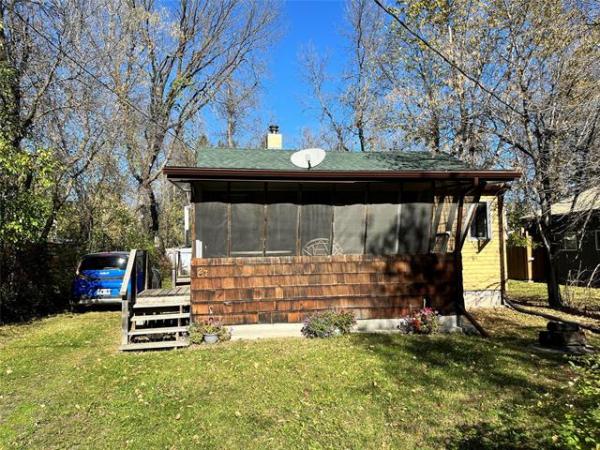1. In recent years, outdoor play structures have undergone a design revolution. When building a play yard, cedar is the classic, rot-resistant choice and it's great in every way except the price. Cedar is costly. That's why quite a few people choose pressure-treated lumber instead. PT wood has an ominous reputation because of the chemical preservatives traditionally used to prevent rot, but things have changed considerably over the last few years. The lumber industry voluntarily withdrew the use of arsenic-based preservatives back in December 2003, and the chemicals used to treat PT wood today are considered safer.
2. Place play equipment at least six feet from house walls, fences, trees, or other obstacles, especially if the equipment includes swings. Make sure the equipment is level and anchor it firmly in the ground.
3. Secure each post for a swing set in a concrete hole at least nine inches square. Tighten all nuts and bolts. Cut off protruding bolt ends with a hacksaw. Attach each swing to wood only with a heavy bolt or eve bolt that penetrates all the way through and is secured by a locknut. A screw eye will loosen with the swing's motion and eventually fall.
4. Playing in a sandbox is the perfect outdoor activity for children one to eight years of age. Depending on their age and skill, each child can experience sand in a different way. Before purchasing a sandbox consider the following: How many kids? Even if you only have one child, there will always be friends who will want to play. How much room? How big is your yard? Will it accommodate a huge sandpit attached to play equipment or are you better suited to a smaller plastic model that is easier to store and get rid of once your children grow up? Your budget? Sandboxes vary from about $50 anywhere up to $1,000 for models that are included as a part of an outdoor play set. If you have a preference for timber, they tend to be expensive, but are more visually appealing. If you choose a smaller plastic model like those for a one- or two-year-old, it will be easier to store and transport. Keep in mind how much sand you will need to purchase to go into the sandbox as this definitely is not included in the price.
5. Before using the sandbox, rub talcum powder on exposed skin. It will make brushing off any sand much easier when your kids are ready to come indoors. After outdoor sand play, use a soft brush to remove any sand particles from children's clothes before they return inside. Keep a mat by the door to reduce the amount of sand that is tracked indoors.
6. Trampolines range in size from the large outdoor variety to the small, personal-exercise type. In 2000, trampoline gymnastics became an official Olympic event, which probably contributed to their recent increase in popularity. The number of trampoline-related injuries has also grown. Currently there is no regulatory agency in Canada monitoring the design and safety of trampolines. Before purchasing a trampoline check that it meets ASTM International (formerly the American Society for Testing and Materials) standards.
7. Cleaning your trampoline: Use a large broom to sweep any loose debris off the mat, or use a shop vacuum. Wash the trampoline mat with warm water and dish soap. Scrub the mat with brushes or sponges. Rinse all soap off so that the mat does not become slimy. Leave the mat to air-dry.
8. Outdoor activities often include bike riding. On this topic, bicycle helmet use should not be optional for anyone in your family, no matter where you are or how short the ride. In many areas it's the law. Here's why: Most bike accidents involve a head injury, so a crash could mean permanent brain damage or death for someone who doesn't wear one while riding. In fact, each year in the United States, about half a million kids are seriously injured in bicycle-related accidents, and most of those injuries could have been avoided if a helmet were worn.
9. Be sure to replace any helmet made before 1999. If your child hits the surface hard while wearing a helmet, replace it -- helmets lose their capacity to absorb shock after taking serious hits. A few bike helmets can be used as protection for other activities, but in general, they're best suited to biking. Most helmets are made for one specific type of activity -- for example, special helmets are made for inline skating, baseball, and snowmobiling. Kids should not wear any helmet when they're on a playground or climbing a tree -- there is a risk of strangulation from the chinstrap during these types of activities.
10. In addition to wearing a helmet, your children should be dressed in light or bright-coloured clothing to help them stand out while riding their bikes. Avoid riding in low-light conditions or at night when it is tough for a motorist to see your child on their bike. Many parents have purchased reflective stripes for their kids' coats that help them stand out while they are riding or walking.
11. Sidewalk chalk recipe: In an empty margarine tub measure two parts plaster of Paris and slowly stir in one part water (or just a little less). Add colouring -- either powdered or liquid tempera paint, food colouring, or acrylic craft paint. Mix and allow mixture to thicken. Add more water, if required, to the consistency of thick frosting, pour into small plastic moulds. This is a fun activity for a child's birthday!
12. Homemade sidewalk chalk moulds: Use paper towel rolls (cut to desired length and covered on one end with plastic wrap, foil, duct tape or something similar), muffin or cupcake pans, Dixie cups, cookie cutters, small sand moulds, soap moulds, ice cube trays, clean prescription pill bottles or Popsicle moulds. Line tubular moulds such as Popsicle containers with waxed paper before filling and the dried chalk should slide out easily. It may take several days for your homemade chalk to harden. Caution: Making chalk is a messy business; cover your work surface with newspaper before you begin.
Important: Avoid breathing in the dust of plaster of Paris and follow all safety precautions written on the box.
13. Best bubble-making solution: In a bucket combine one cup water, two tablespoons glycerine (helps bubbles last longer) and four tablespoons Dawn Ultra, Dawn, Joy or Ivory dish soap. Make the solution the day before using to increase bubble-making capacity. Soft water is good for bubbles. Hard well water, and any water containing high levels of iron, are bad for bubbles. Remember, you don't want foam, it is the enemy of bubbles and will make your solution weaker. When you mix, don't stir too much. If foam forms, simply scoop it out. Note that wind and humidity can affect your solution enormously; for best results use solution early in the morning or evening (after rain is superb).
14. Homemade bubble wands: A fly swatter will produce plenty of itty-bitty bubbles. Cookie cutters and pipe cleaners are ideal for constructing bubble blowers. Twist two together into a circle and wind on another for a handle. Help your little ones bend the wire into shapes like hearts, diamonds, or even stars. Of course, there's always the durable yet pliable wire clothes hanger. Unwind the hanger and straighten out the wire, loop a small section at one end and use the length as a handle.
15. Delicious brain freeze homemade ice cream: In a large bowl, combine two cups half-and-half cream, two cups whipping cream, one (14-ounce) can sweetened condensed milk and two tablespoons vanilla extract. Mix well. Pour contents into large plastic freezable container, close lid. Freeze.
Solutions is compiled from various sources: hometips.com, kids-fun-and-games.com, wikihow.com, hc-sc.gc.ca, allfreecrafts.com, theideabox, bubbles.org, kidshealth.org, homeenvy.com. Similar information may be found elsewhere.
Solutions sleuth Reena Nerbas is a home economist and speaks professionally on the topic of household challenges; she is also the author of two national bestsellers, Household Solutions 1 with Substitutions and Household Solutions 2 with Kitchen Secrets. She can be heard on radio and television programs across Canada.



